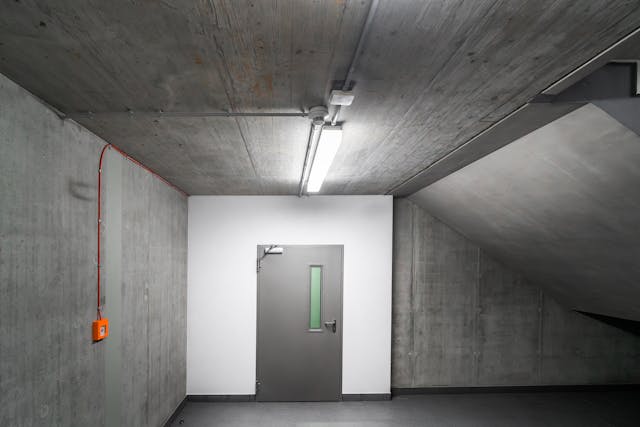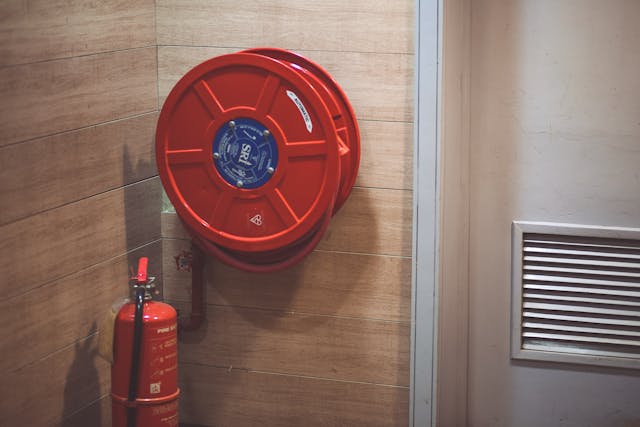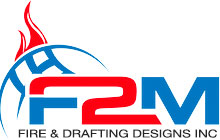Technology
Emerging Trends in Fire Safety Technology and Their Implications for System Design

In this blog post, we will explore the latest trends in fire safety technology and discuss their implications for fire protection system design. Fire safety technology is continuously evolving, driven by advancements in science, engineering, and technology. These emerging trends are transforming how fire safety systems are designed, implemented, and managed.
Emerging Trends in Fire Safety Technology
Advanced Detection Systems
Smart Sensors
Smart sensors are revolutionizing fire detection by providing more accurate and timely alerts. Key features include:
- Ability to detect a range of fire indicators, including heat, smoke, and gases.
- Integration with building management systems for real-time monitoring and alerts.
- Reduction in false alarms, leading to more reliable fire response.
Multi-Criteria Detectors
Multi-criteria detectors combine multiple sensors to improve detection accuracy. Benefits include:
- Enhanced ability to distinguish between actual fires and non-threatening conditions.
- Improved response times by providing more detailed information about the fire.
- Integration with other building systems for a coordinated response.
Enhanced Suppression Technologies
Water Mist Systems
Water mist systems use fine droplets of water to suppress fires effectively. Advantages include:
- Efficient use of water, reducing water damage and consumption.
- Enhanced cooling effect, making them suitable for a variety of fire types.
- Safe for use around electrical equipment and sensitive areas.
Hybrid Fire Suppression Systems
Hybrid systems combine different suppression agents to provide comprehensive fire protection. Features include:
- Combining water mist with inert gases or foam for enhanced effectiveness.
- Tailored solutions for specific fire risks, such as data centers and industrial facilities.
- Improved adaptability to changing fire scenarios.
Integration with Smart Building Technology
IoT-Enabled Fire Safety Systems
The Internet of Things (IoT) is transforming fire safety by enabling interconnected devices and systems. Key benefits include:
- Real-time data collection and analysis for improved decision-making.
- Automated responses to fire incidents, such as shutting down HVAC systems and unlocking emergency exits.
- Remote monitoring and control of fire safety systems.
Building Management System Integration
Integrating fire safety systems with building management systems enhances overall safety and efficiency. Features include:
- Centralized control and monitoring of all building systems.
- Coordinated response to fire incidents, improving occupant safety.
- Energy efficiency improvements by optimizing system operations.
Eco-Friendly Fire Protection Solutions
Sustainable Materials
Using sustainable materials in fire protection systems helps reduce the environmental impact. Key considerations include:
- Choosing materials with a lower carbon footprint and longer lifespan.
- Utilizing recycled or recyclable components.
- Ensuring that materials do not release harmful substances during a fire.
Water and Energy Efficiency
Advancements in fire protection technology are focused on improving water and energy efficiency. Benefits include:
- Low-flow sprinkler heads that use less water while maintaining effectiveness.
- Energy-efficient fire pumps and control systems.
- Water recycling systems that reduce overall water consumption.

Implications for System Design
Customizable Solutions
The emergence of new technologies allows for more customizable fire protection solutions. Designers can now tailor systems to meet the specific needs of different environments. Benefits include:
- Enhanced protection for unique fire risks in various industries.
- Flexibility in system design to accommodate building-specific requirements.
- Improved scalability and adaptability to future changes.
Enhanced Reliability and Maintenance
Modern fire protection systems are designed with reliability and ease of maintenance in mind. Key advantages include:
- Reduced maintenance costs and downtime through advanced diagnostics and remote monitoring.
- Improved system reliability, ensuring optimal performance during emergencies.
- Proactive maintenance strategies enabled by real-time data and analytics.
Trends in Fire Safety Technology: Conclusion
The latest trends in fire safety technology are significantly enhancing the capabilities and effectiveness of fire protection systems. By embracing advanced detection systems, enhanced suppression technologies, integration with smart building technology, and eco-friendly solutions, fire protection system design is evolving to meet the demands of modern buildings and environments.
At F2M Fire & Drafting Designs Inc., we are at the forefront of these technological advancements, offering cutting-edge fire protection solutions tailored to your specific needs. Contact us today to learn how we can help you implement the latest fire safety technologies in your building.
F2M Fire & Drafting Designs Inc.
718-0928-3009
info@f2mfadds.com
Stay ahead of the curve with our expert fire protection system design and implementation services.
The Benefits of Integrating Fire Sprinkler Systems with Smart Building Technology
What are the benefits of integrating fire sprinkler systems with smart building technology? In today’s digital age, smart building technology is transforming the way we manage and maintain buildings. One of the most significant advancements in this field is the integration of fire sprinkler systems with this new technology. This integration not only enhances fire safety but also offers numerous benefits for building management and occupant safety.

Fire Sprinkler Systems with Smart Building Technology
Enhanced Detection and Response
Real-Time Monitoring
Smart building technology enables real-time monitoring of fire sprinkler systems. This allows for:
- Immediate detection of fire incidents.
- Instant alerts to building management and emergency services.
- Continuous monitoring of system performance and status.
Automated Responses
Integration with smart building systems facilitates automated responses to fire incidents, such as:
- Activating fire alarms and evacuation protocols.
- Automatically unlocking emergency exits.
- Shutting down HVAC systems to prevent the spread of smoke.
Improved Maintenance and Diagnostics
Predictive Maintenance
Smart technology can predict when maintenance is needed, based on data analytics and usage patterns. Benefits include:
- Preventing system failures through proactive maintenance.
- Reducing downtime and repair costs.
- Extending the lifespan of fire sprinkler systems.
Remote Diagnostics
Remote access to system diagnostics allows for:
- Identifying and addressing issues quickly.
- Minimizing the need for on-site inspections.
- Enhancing the efficiency of maintenance operations.
Energy and Cost Efficiency
Optimized Water Usage
Smart fire sprinkler systems can optimize water usage by:
- Delivering water only where and when it’s needed.
- Reducing water damage and waste.
- Lowering water-related costs.
Cost Savings
The integration of smart technology can lead to significant cost savings through:
- Reduced maintenance and repair expenses.
- Lower insurance premiums due to enhanced safety measures.
- Improved energy efficiency in building operations.
Enhanced Occupant Safety and Comfort
 Comprehensive Safety Measures
Comprehensive Safety Measures
Integrating fire sprinkler systems with smart building technology ensures comprehensive safety measures, including:
- Coordinated evacuation procedures.
- Enhanced communication with occupants during emergencies.
- Real-time updates on safety status.
Increased Comfort
Smart technology contributes to a comfortable living and working environment by:
- Maintaining optimal indoor conditions during emergencies.
- Ensuring quick resolution of fire incidents with minimal disruption.
- Providing peace of mind for building occupants.
Integrating Fire Sprinkler Systems with Smart Building Technology: Conclusion
The integration of fire sprinkler systems with smart building technology offers numerous benefits, from enhanced detection and response to improved maintenance, cost efficiency, and occupant safety. As buildings become smarter, integrating these technologies is not just a trend but a necessity for modern building management and safety.
Contact F2M Fire & Drafting Designs Inc. In New York for your Fire Sprinkler System Design Needs
At F2M Fire & Drafting Designs Inc., we specialize in integrating fire sprinkler systems with smart building technology to provide comprehensive fire protection solutions.
Contact us today to learn how our advanced integration services can enhance the safety and efficiency of your building.
F2M Fire & Drafting Designs Inc.
31 South Street, Suite 3S-4
Mount Vernon, NY 10550
✆ (718) 928-3009
Email: info@f2mfadds.com
Embrace the future of building safety with our innovative fire protection solutions.
The Latest Innovations in Fire Sprinkler System Technology
 In this blog post, we’ll explore the cutting-edge innovations in fire sprinkler system technology that are shaping the future of fire safety. In the realm of fire safety, innovation is a driving force behind the development of more efficient and effective fire sprinkler systems. Staying up-to-date with the latest advancements in technology can significantly enhance the fire protection measures in your building.
In this blog post, we’ll explore the cutting-edge innovations in fire sprinkler system technology that are shaping the future of fire safety. In the realm of fire safety, innovation is a driving force behind the development of more efficient and effective fire sprinkler systems. Staying up-to-date with the latest advancements in technology can significantly enhance the fire protection measures in your building.
Advanced Detection Systems
Smart Sensors
Modern fire sprinkler systems incorporate smart sensors that can detect not only smoke and heat but also gases and particulate matter. These sensors provide early warnings, reducing false alarms and improving response times.
Artificial Intelligence (AI)
AI-driven detection systems can analyze data in real-time to differentiate between genuine threats and false alarms, minimizing disruptions and ensuring rapid response when needed.
Enhanced Suppression Technologies
Water Mist Systems
Water mist systems use fine droplets of water to suppress fires. They are highly effective in controlling fires while minimizing water damage to the building.
High-Pressure Systems
High-pressure fire sprinkler systems can deliver water with greater force, making them ideal for protecting high-hazard areas.
Integration with Building Management Systems
Seamless Communication
Fire sprinkler systems are now designed to seamlessly integrate with building management systems, allowing for centralized control, monitoring, and automatic responses to fire events.
Remote Monitoring
Remote monitoring capabilities enable facility managers to keep an eye on the status of the fire sprinkler system in real-time, even from off-site locations.
Eco-Friendly Solutions
Water Recycling
Innovative systems are designed to recycle water used in fire suppression, reducing water waste and environmental impact.
Low-Flow Sprinklers
Low-flow sprinklers are designed to minimize water consumption while effectively controlling fires.
Innovations in Fire Sprinkler System Technology: Stay Ahead with the Latest in Fire Safety Technology
At F2M Fire & Drafting Designs Inc., we are committed to providing the most advanced fire sprinkler system technology to ensure your building’s safety. Contact us today to learn how our innovative solutions can elevate your fire protection measures and keep you at the forefront of fire safety technology.
F2M Fire & Drafting Designs Inc.
718-928-3009
Email: info@f2mfadds.com
Don’t wait to embrace the future of fire safety—partner with us to harness the power of the latest innovations in fire sprinkler system technology.
